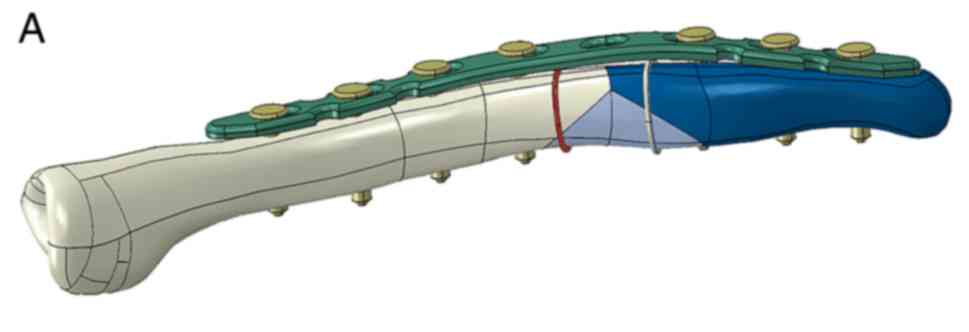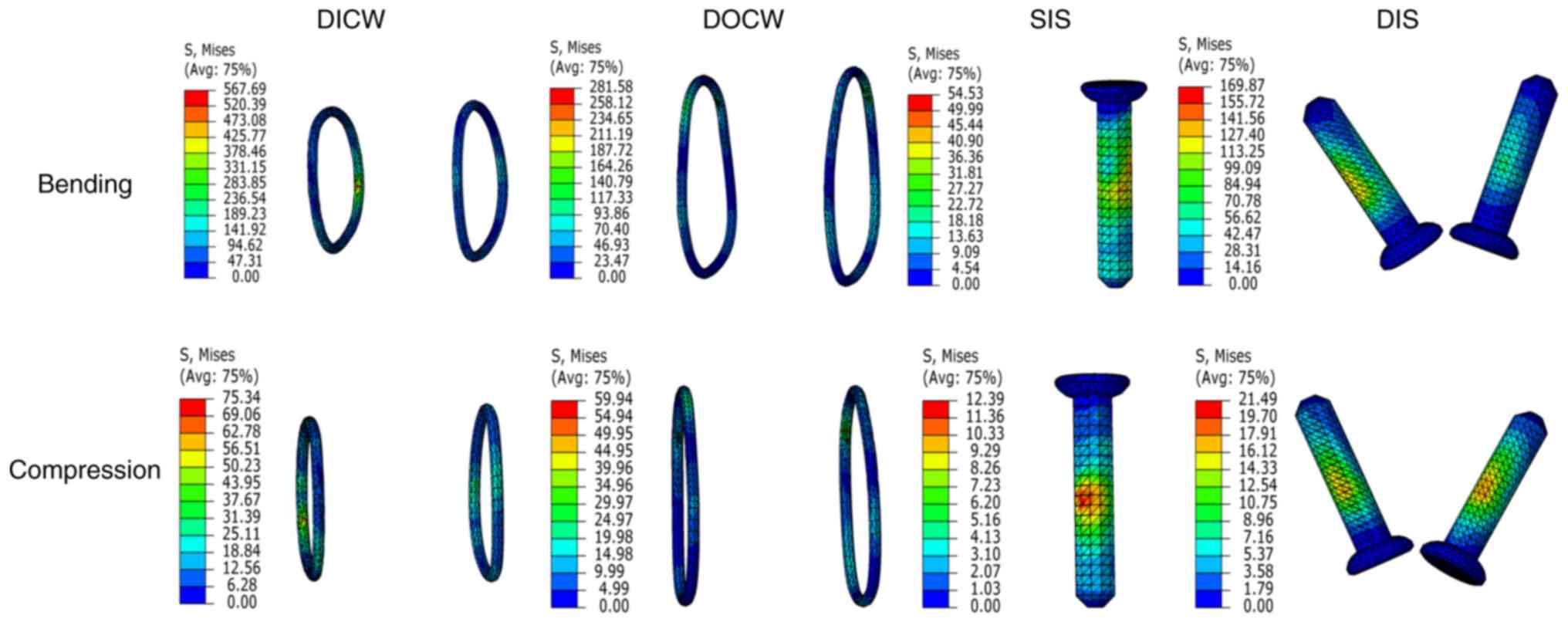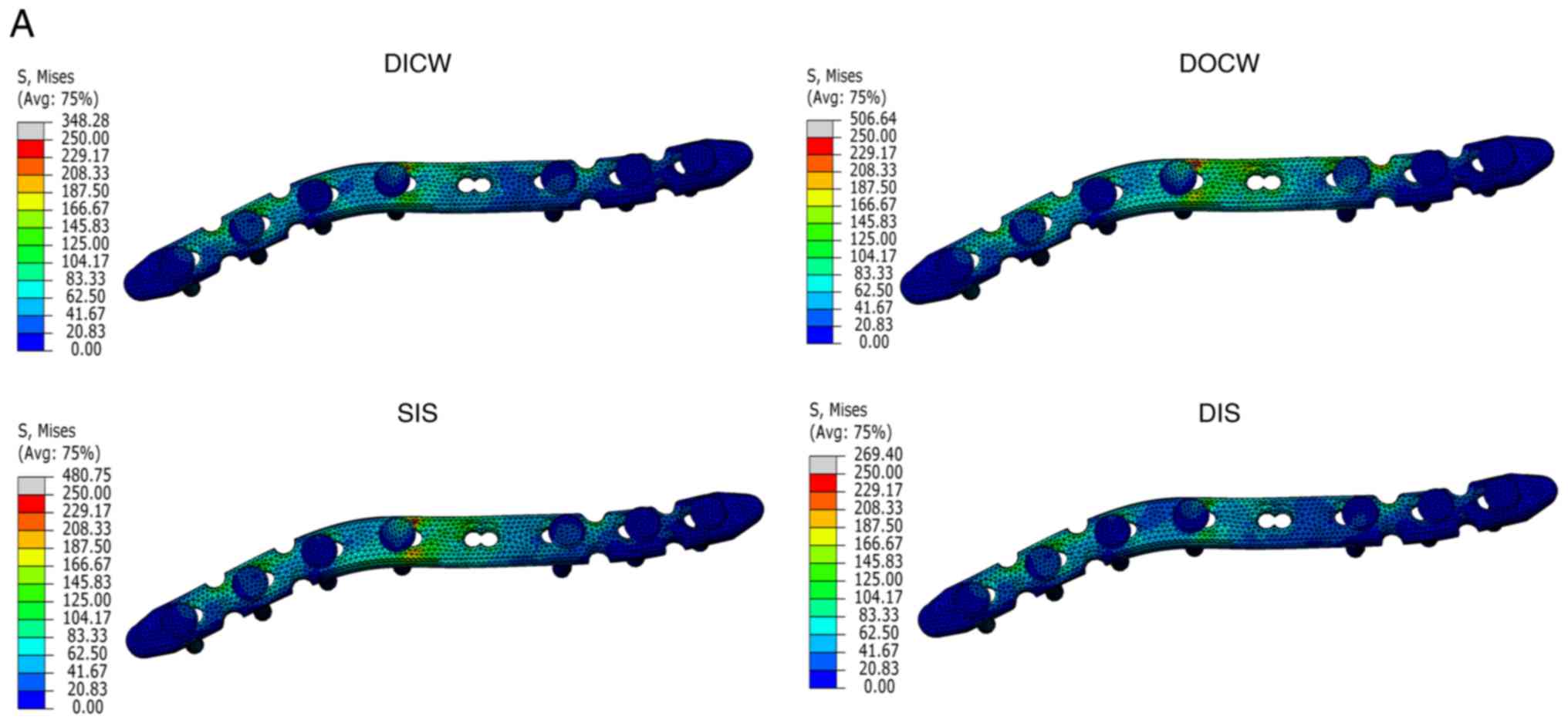|
1
|
Postacchini F, Gumina S, De Santis P and
Albo F: Epidemiology of clavicle fractures. J Shoulder Elbow Surg.
11:452–456. 2002.PubMed/NCBI View Article : Google Scholar
|
|
2
|
Kulshrestha V, Roy T and Audige L:
Operative versus nonoperative management of displaced midshaft
clavicle fractures: A prospective cohort study. J Orthop Trauma.
25:31–38. 2011.PubMed/NCBI View Article : Google Scholar
|
|
3
|
Shen WJ, Liu TJ and Shen YS: Plate
fixation of fresh displaced midshaft clavicle fractures. Injury.
30:497–500. 1999.PubMed/NCBI View Article : Google Scholar
|
|
4
|
Canadian Orthopaedic Trauma Society.
Nonoperative treatment compared with plate fixation of displaced
midshaft clavicular fractures. A multicenter, randomized clinical
trial. J Bone Joint Surg Am. 89:1–10. 2007.PubMed/NCBI View Article : Google Scholar
|
|
5
|
Shin SJ, Do NH and Jang KY: Risk factors
for postoperative complications of displaced clavicular midshaft
fractures. J Trauma Acute Care Surg. 72:1046–1050. 2012.PubMed/NCBI View Article : Google Scholar
|
|
6
|
Chen CH, Chen JC, Wang C, Tien YC, Chang
JK and Hung SH: Semitubular plates for acutely displaced
midclavicular fractures: A retrospective study of 111 patients
followed for 2.5 to 6 years. J Orthop Trauma. 22:463–466.
2008.PubMed/NCBI View Article : Google Scholar
|
|
7
|
Faraj AA, Naraen A and Twigg P: A
comparative study of wire fixation and screw fixation in
arthrodesis for the correction of hallux rigidus using an in vitro
biomechanical model. Foot Ankle Int. 28:89–91. 2007.PubMed/NCBI View Article : Google Scholar
|
|
8
|
Matloub HS, Jensen PL, Sanger JR, Grunert
BK and Yousif NJ: Spiral fracture fixation techniques. A
biomechanical study. J Hand Surg [Br]. 18:515–519. 1993.PubMed/NCBI View Article : Google Scholar
|
|
9
|
Smekal V, Oberladstaetter J, Struve P and
Krappinger D: Shaft fractures of the clavicle: Current concepts.
Arch Orthop Trauma Surg. 129:807–815. 2009.PubMed/NCBI View Article : Google Scholar
|
|
10
|
Wijdicks FJ, Van der Meijden OA, Millett
PJ, Verleisdonk EJ and Houwert RM: Systematic review of the
complications of plate fixation of clavicle fractures. Arch Orthop
Trauma Surg. 132:617–625. 2012.PubMed/NCBI View Article : Google Scholar
|
|
11
|
Favre P, Kloen P, Helfet DL and Werner CM:
Superior versus anteroinferior plating of the clavicle: A finite
element study. J Orthop Trauma. 25:661–665. 2011.PubMed/NCBI View Article : Google Scholar
|
|
12
|
Huang TL, Chen WC, Lin KJ, Tsai CL, Lin KP
and Wei HW: Conceptual finite element study for comparison among
superior, anterior, and spiral clavicle plate fixations for
midshaft clavicle fracture. Med Eng Phys. 38:1070–1075.
2016.PubMed/NCBI View Article : Google Scholar
|
|
13
|
Ni M, Niu W, Wong DW, Zeng W, Mei J and
Zhang M: Finite element analysis of locking plate and two types of
intramedullary nails for treating mid-shaft clavicle fractures.
Injury. 47:1618–1623. 2016.PubMed/NCBI View Article : Google Scholar
|
|
14
|
Marsh JL, Slongo TF, Agel J, Broderick JS,
Creevey W, DeCoster TA, Prokuski L, Sirkin MS, Ziran B, Henley B,
et al: Fracture and dislocation classification compendium - 2007:
Orthopaedic Trauma Association classification, database and
outcomes committee. J Orthop Trauma. 21:S1–S133. 2007.PubMed/NCBI View Article : Google Scholar
|
|
15
|
Cronskär M, Rasmussen J and Tinnsten M:
Combined finite element and multibody musculoskeletal investigation
of a fractured clavicle with reconstruction plate. Comput Methods
Biomech Biomed Engin. 18:740–748. 2015.PubMed/NCBI View Article : Google Scholar
|
|
16
|
Goffin JM, Pankaj P and Simpson AH: The
importance of lag screw position for the stabilization of
trochanteric fractures with a sliding hip screw: A subject-specific
finite element study. J Orthop Res. 31:596–600. 2013.PubMed/NCBI View Article : Google Scholar
|
|
17
|
Iannolo M, Werner FW, Sutton LG, Serell SM
and VanValkenburg SM: Forces across the middle of the intact
clavicle during shoulder motion. J Shoulder Elbow Surg.
19:1013–1017. 2010.PubMed/NCBI View Article : Google Scholar
|
|
18
|
Scepi M, Faure JP, Ridoux N, Kamina P and
Richer JP: A three-dimensional model of the shoulder girdle. Forces
developed in deltoid and supraspinatus muscles during abduction.
Surg Radiol Anat. 26:290–296. 2004.PubMed/NCBI View Article : Google Scholar
|
|
19
|
Bayraktar HH, Morgan EF, Niebur GL, Morris
GE, Wong EK and Keaveny TM: Comparison of the elastic and yield
properties of human femoral trabecular and cortical bone tissue. J
Biomech. 37:27–35. 2004.PubMed/NCBI View Article : Google Scholar
|
|
20
|
Asadollahi S, Hau RC, Page RS, Richardson
M and Edwards ER: Complications associated with operative fixation
of acute midshaft clavicle fractures. Injury. 47:1248–1252.
2016.PubMed/NCBI View Article : Google Scholar
|
|
21
|
Perren SM, Fernandez Dell'Oca A, Lenz M
and Windolf M: Cerclage, evolution and potential of a Cinderella
technology. An overview with reference to periprosthetic fractures.
Acta Chir Orthop Traumatol Cech. 78:190–199. 2011.PubMed/NCBI
|
|
22
|
Lenz M, Lehmann W and Wähnert D:
Periprosthetic fracture fixation in osteoporotic bone. Injury 47
(Suppl 2). S44–S50. 2016.PubMed/NCBI View Article : Google Scholar
|
|
23
|
Kirby BM and Wilson JW: Effect of
circumferential bands on cortical vascularity and viability. J
Orthop Res. 9:174–179. 1991.PubMed/NCBI View Article : Google Scholar
|
|
24
|
Misaghi A, Doan J, Bastrom T and Pennock
AT: Biomechanical Evaluation of Plate Versus Lag Screw Only
Fixation of Distal Fibula Fractures. J Foot Ankle Surg. 54:896–899.
2015.PubMed/NCBI View Article : Google Scholar
|
|
25
|
Baumgart FW, Cordey J, Morikawa K, Perren
SM, Rahn BA, Schavan R and Snyder S: AO/ASIF self-tapping screws
(STS). Injury 24 (Suppl 1). S1–S17. 1993.PubMed/NCBI View Article : Google Scholar
|
|
26
|
Jagodzinski M and Krettek C: Effect of
mechanical stability on fracture healing - an update. Injury. 38
(Suppl 1):S3–S10. 2007.PubMed/NCBI View Article : Google Scholar
|














